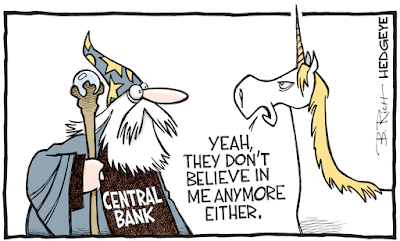As promised not long ago, here a short paper on the history of central banks presented at ASSA meeting in Philadelphia. The paper is short, given the submission policy. It discusses the growing literature on the origins of central banks, and essentially disagrees with Charles Goodhart, who is the authority on the topic.The conventional argument is that central banks only become effectively central banks in the late 19th century when a concern with financial stability was developed and the function of Lender of Last Resort (LOLR) was more formally established. The notion is that up to that point central banks were essentially concerned with profit making, as private institutions, and that only when a concern with financial stability as a public good was developed is that they can be
Topics:
Matias Vernengo considers the following as important: Fiscal-Military State, Goodhart, History of central banks
This could be interesting, too:
Matias Vernengo writes From Truncated Developmental State to Failed State in Latin America
Matias Vernengo writes Handbook of the History of Money and Currency
Matias Vernengo writes Classical Political Economy and the Evolution of Central Banks
Matias Vernengo writes Adam Smith on the origins of first generation public banks
As promised not long ago, here a short paper on the history of central banks presented at ASSA meeting in Philadelphia. The paper is short, given the submission policy. It discusses the growing literature on the origins of central banks, and essentially disagrees with Charles Goodhart, who is the authority on the topic.
The conventional argument is that central banks only become effectively central banks in the late 19th century when a concern with financial stability was developed and the function of Lender of Last Resort (LOLR) was more formally established. The notion is that up to that point central banks were essentially concerned with profit making, as private institutions, and that only when a concern with financial stability as a public good was developed is that they can be seen truly as public institutions (even if they remained private).

